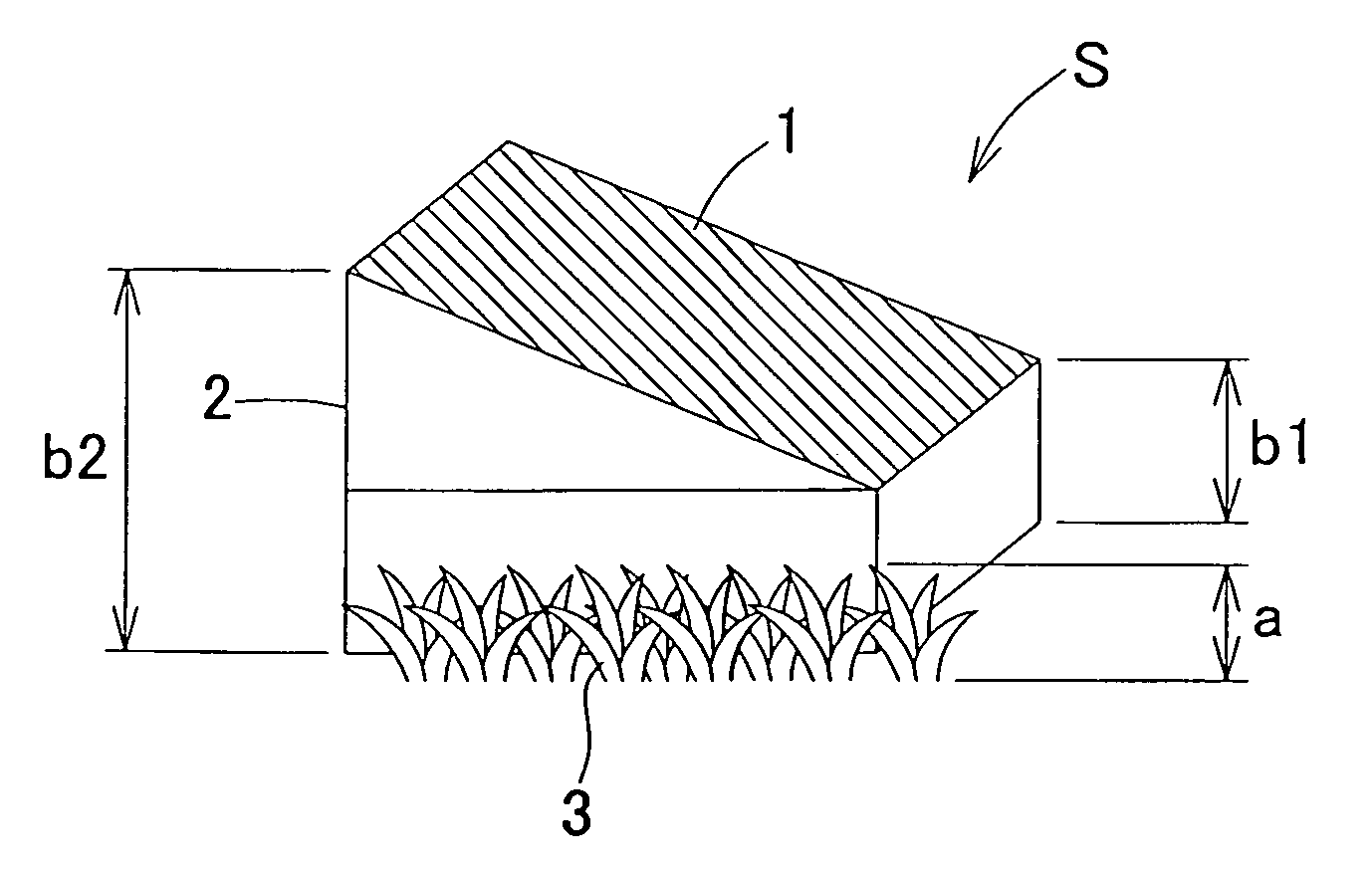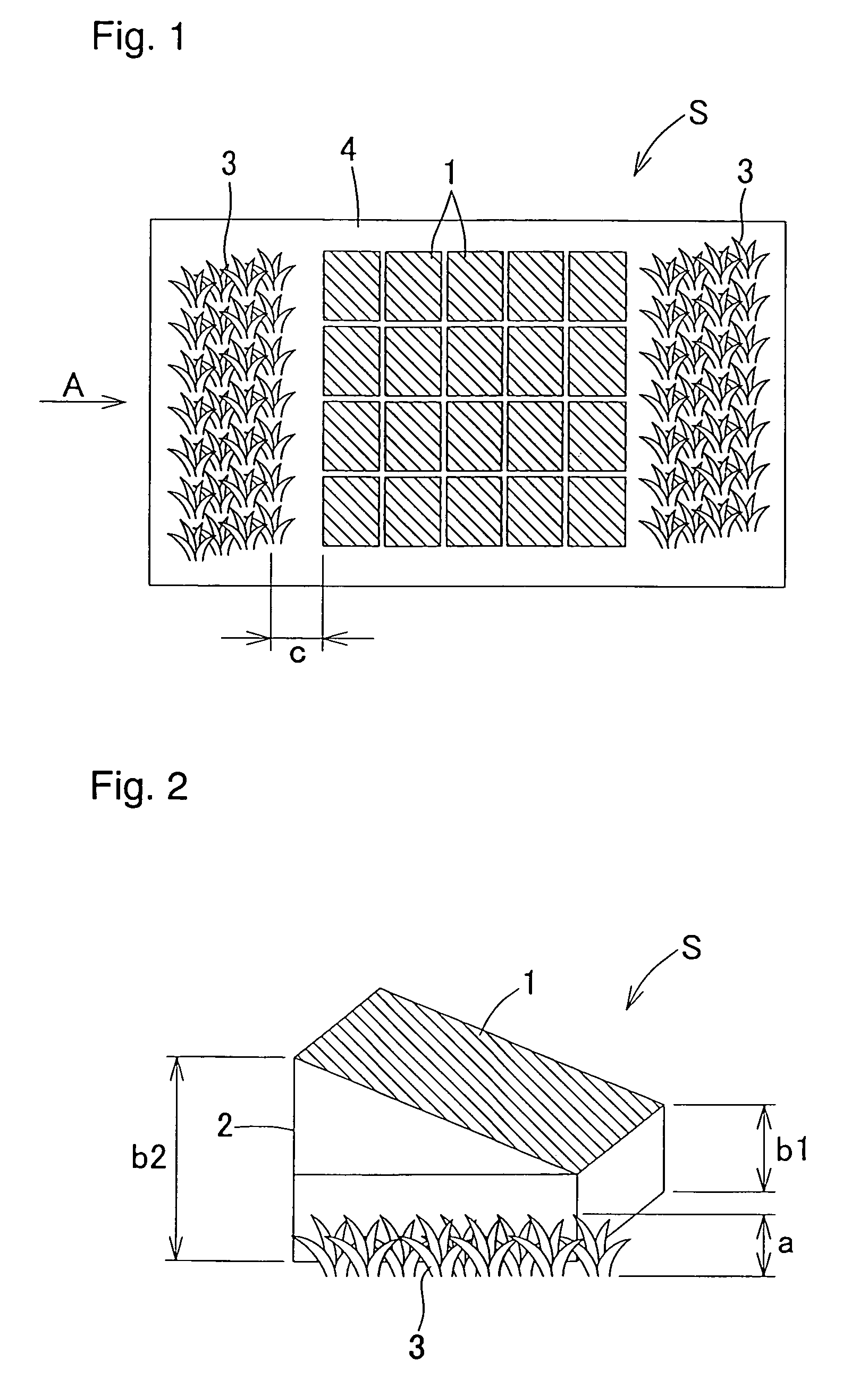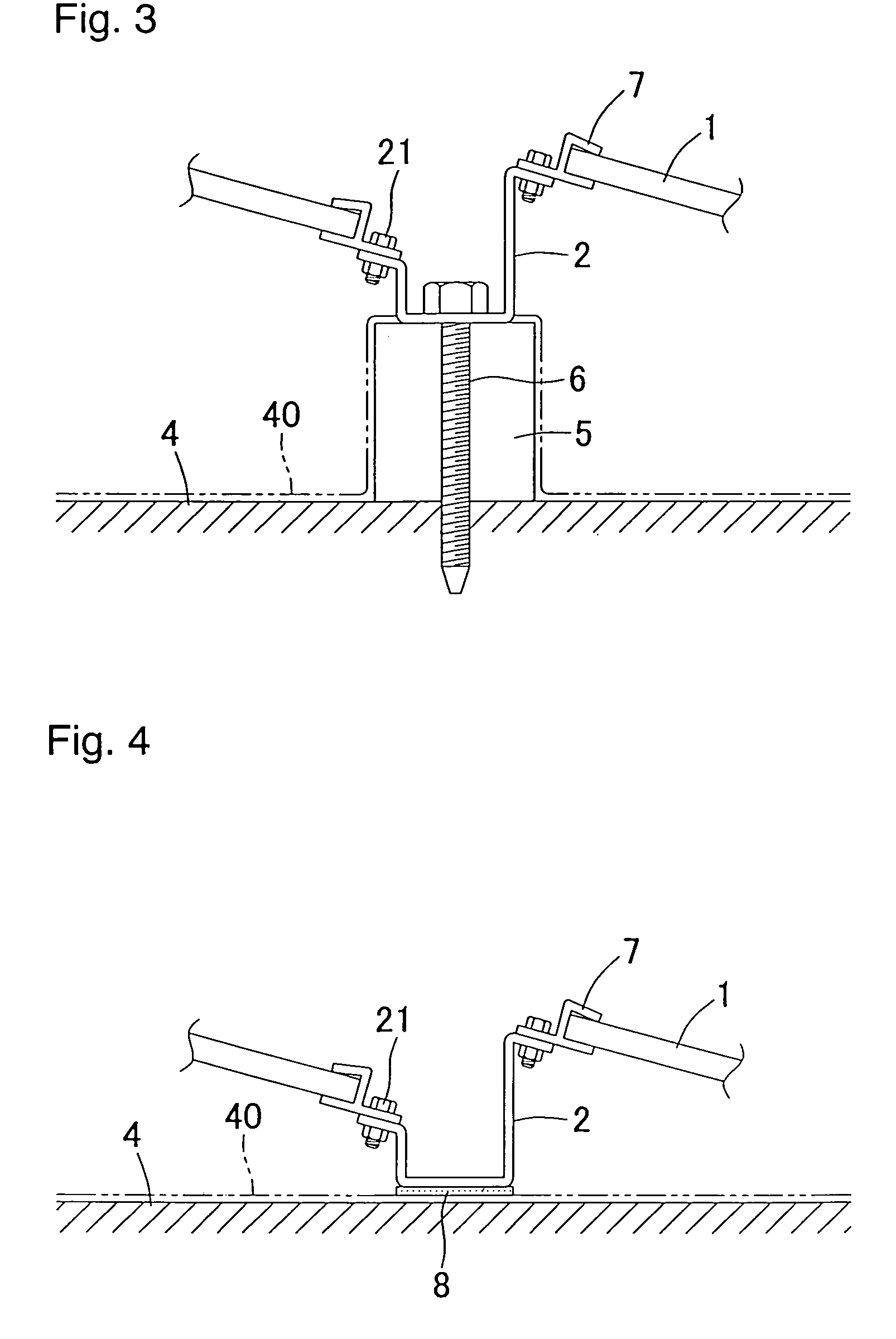Complex system of vegetation and solar cell
a solar cell and complex technology, applied in the field of complex systems of vegetation and solar cells, can solve the problems of high cost of fixing a solar cell system to a high-rise building, the effect of the shadows of plants and solar cells as well as the maintenance of the solar cell system, and the large area of glass plates occupying a large amount of the weight of the solar cell module, so as to achieve reliable and straightforward execution, excel in terms of economy and reliability, and reliable and straightforward execution
- Summary
- Abstract
- Description
- Claims
- Application Information
AI Technical Summary
Benefits of technology
Problems solved by technology
Method used
Image
Examples
first embodiment
[0044]Embodiments of the present invention will be described in detail hereinbelow with reference to the attached drawings. First, the present invention will be described based on FIGS. 1 to 6.
[0045]As shown in FIGS. 1 and 2, a vegetation and solar cell complex system S of this embodiment is a system that installs a solar cell system 10 and a plant group 3 together on the same roof surface 4 and the average height b from the roof surface 4 of the light-receiving surface of a solar cell module 1 is greater than the average height a of the plant group 3.
[0046]Here, ‘roof’ indicates a roof of an architectural structure including that of a building or house or the like. However, in order to maximize the effects of the present invention, a roof, that is, a roof surface with a small gradient is preferable.
[0047]‘Plant group 3’ denotes one or more types of plant or two or more types of plant. Example of plants include trees such as broadleaf trees, evergreen trees, deciduous trees, conifer...
second embodiment
[0062]the present invention will be described next with reference to FIG. 7.
[0063]The vegetation and solar cell complex system S of this embodiment is one in which the mount 2 is installed on the same roof surface 4 and a solar cell system rendered by fixing the solar cell module 1 to the mount and a plant group are installed together such that at least the side of the mount 2 and the plant group 3 substantially adjoin one another. Further, the plant group 3 is established to cover half or more of the area that can be ventilated of a mount side 20 and the wind pressure acting on the solar cell system is reduced by the plant anti-wind pressure.
[0064]The arrangement of the solar cell system 10 and the plant group 3 of this embodiment is the same as that in FIG. 1 of the first embodiment. FIG. 7 is a partial view on arrow in the direction of arrow A that serves to illustrate the side of the frame and the area that can be ventilated of the side of the frame, and the frame side 20 shows ...
third embodiment
[0069]the present invention will be described next on the basis of FIGS. 8 to 10.
[0070]As shown in FIGS. 8 and 9, the vegetation and solar cell complex system S of this embodiment is constituted such that the mount 2 for fixing the solar cell module 1 is fixed to the roof surface 4 by means of pressure-sensitive adhesive tape 80 and is prevented from dropping by means of wires 9. More specifically, the wires 9 are arranged to pass through gaps 22a that exist in parallel to the roof surface 4 of the mount 2 and more reliably prevent the solar cell module 1 from dropping to the periphery of the roof even in the event of a typhoon or earthquake or the like.
[0071]The mount 2 comprises a mount rail 23 and a pedestal 22 and the solar cell module 1 is stacked on the mount 2. The mount rail 23 is fixed onto the pedestal 22 by means of bolts and the solar cell module 1 is stacked on the mount rail 23. Thereupon, the timely insertion of a sheet consisting of hard rubber as a spacer between th...
PUM
 Login to View More
Login to View More Abstract
Description
Claims
Application Information
 Login to View More
Login to View More - R&D
- Intellectual Property
- Life Sciences
- Materials
- Tech Scout
- Unparalleled Data Quality
- Higher Quality Content
- 60% Fewer Hallucinations
Browse by: Latest US Patents, China's latest patents, Technical Efficacy Thesaurus, Application Domain, Technology Topic, Popular Technical Reports.
© 2025 PatSnap. All rights reserved.Legal|Privacy policy|Modern Slavery Act Transparency Statement|Sitemap|About US| Contact US: help@patsnap.com



